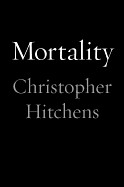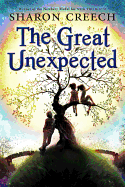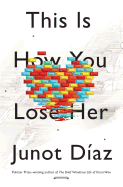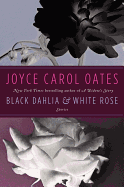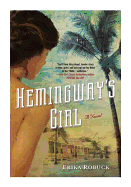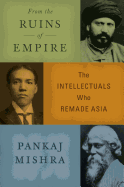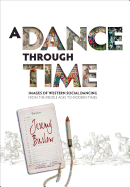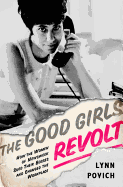Friday, September 14, 2012
Tomorrow, September 15, is International Dot Day. More than half a million people around the globe have registered to celebrate.
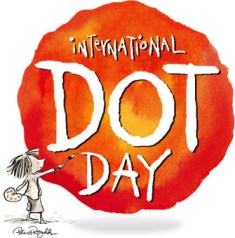 Author and artist Peter H. Reynolds kicks off the third annual Dot Day with Mayor Thomas Menino at the Boston Children's Museum. Fittingly, the celebration began with a teacher, Terry Shay of Waterloo, Iowa, and his students on September 15, 2009. It was Vashti's teacher in The Dot who set the budding artist on her path with the suggestion, "Just make a mark and see where it takes you."
Author and artist Peter H. Reynolds kicks off the third annual Dot Day with Mayor Thomas Menino at the Boston Children's Museum. Fittingly, the celebration began with a teacher, Terry Shay of Waterloo, Iowa, and his students on September 15, 2009. It was Vashti's teacher in The Dot who set the budding artist on her path with the suggestion, "Just make a mark and see where it takes you."
Reynolds believes, like his heroine Marisol in Sky Color (reviewed below), that each of us has a powerful innate impulse to create. He admits that sometimes while sipping a cup of tea he's so inspired that rather than get water, he's used his tea as his watercolor base. That contributes to the sepia tones in what he calls his "creatrilogy": The Dot, Ish and Sky Color (all published by Candlewick).
More than 15,000 International Dot Day celebrations will take place around the world. Teachers, librarians and booksellers can download an Educator's Handbook, and children (of all ages) may visit the Dot Gallery for an array of inspirations for their paintings, drawings, collages and crafts. A Google map shows where participating registrants are located. Compare notes with them on Twitter (#dotday #makeyourmark #choose2matter) and Facebook.
Peter Reynolds lives out his creativity. In addition to writing and illustrating, he opened Blue Bunny Books and Toys in Dedham, Mass., and with his twin brother, Paul, he also founded FableVision, a media and educational software company. Follow Peter's lead and join the celebration of International Dot Day. Make your mark! --Jennifer M. Brown, children's editor, Shelf Awareness
The Yellow Birds
by Kevin Powers
In Kevin Powers's visceral debut novel, The Yellow Birds, the war in Iraq seems driven as much by the relentless intensity of the hot, bright sun as by the suicidal fervor of the insurgents. Private Bartle, 21, and his younger buddy Murph soldier up every day, donning body armor and Goopacks to walk the streets and outskirts of Al Tafar. Whether they live or die seems not a matter of training, strategy or superior technology but of luck.
The Yellow Birds is a meditative war story, more Red Badge of Courage than Catch-22. In chapters that alternately take place during training at Fort Dix, deployment in Al Tafar, discharge through Kaiserslautern and home again, Powers captures their transition from naïve enlistees to war-weary, guilt-ridden veterans.
Powers's sensitive novel reflects the soldier's difficult reentry back home as Bartle holes up in an empty Richmond, Va., apartment while "the dull world that ignored our little pest of a war rolled on." When asked "Hey, how are you?" he wishes he could just tell the truth: "I feel like I'm being eaten from the inside out and I can't tell anyone what's going on because everyone is so grateful to me all the time and I'll feel like I'm ungrateful... or like I'll give away that I don't deserve anyone's gratitude and really they should all hate me for what I've done." Fortunately, we have the talented Iraq War veteran Powers to tell his story for him. --Bruce Jacobs, founding partner, Watermark Books & Cafe, Wichita, Kan.
Discover: Kevin Powers's evocative debut novel explores the frighteningly unpredictable dangers of modern combat through the perspective of a young army private in Iraq.
This Is How You Lose Her
by Junot Diaz
In the story collection This Is How You Lose Her, Junot Diaz (The Brief Wondrous Life of Oscar Wao) returns to familiar territory--an exploration of the trials, triumphs and cultural dissonance of the Dominican community in the U.S. Many of the stories share a common narrator, Yunior, whose parents brought him to America from Santo Domingo as a child. With his sardonic tone and cutting observations, this Yunior is nearly a duplicate of the Yunior who narrates much of Oscar Wao; here, too, Yunior is ultimately undone by his philandering.
This Is How You Lose Her begins with the unraveling of Yunior's relationship with his fiancée, Magda, when she discovers that he's cheated on her with 50 other women. Desperately, Magda and Yunior circle one another, trying to preserve their relationship, and in Santo Domingo--their birthplace and beginning--they finally break apart.
The later stories, the ones that backtrack through Yunior's life to his adolescence, and then to his childhood as an immigrant, gradually expose the roots of his compulsive infidelity. At the end, Yunior admits to himself that Magda was right to leave him; that the book most suited for him to write is "The Cheater's Guide to Love."
Although only one story contains scenes in Santo Domingo, it remains a constant in the characters' awareness, lending them in some sense a double life. Diaz weaves together this aspect of the immigrant experience with the broken narrative of a search for love--a search that cannot end until the protagonist changes himself. --Ilana Teitelbaum, book reviewer at the Huffington Post
Discover: Junot Diaz follows up his Pulitzer-winning The Brief Wondrous Life of Oscar Wao with a story collection that returns to the Dominican immigrant community, exploring its complexities and pains.
Black Dahlia and White Rose
by Joyce Carol Oates
Never one to shy away from from the grisly and the disturbing, Joyce Carol Oates delves freely into both in Black Dahlia and White Rose. Oates's adeptness with narrative voice--her genius for disappearing into a character--is apparent in this short story collection, as is her sensitivity to metaphor. Many of the stories subtly interweave a surface narrative, rife with drama and incident, with an exploration of darker themes.
This is most apparent in the title story, about the horrific real-life murder of aspiring Hollywood starlet Betty Short in the 1950s. The media of the time sensationalized Short as the "Black Dahlia," a femme fatale Oates contrasts with an angelic "White Rose" persona for her (fictional) roommate Norma Jean Baker, the future Marilyn Monroe. In her depiction of the two women, Oates reinforces the stereotypes that have built up around them: Short is cold-blooded in her ambition, while abusing alcohol and engaging in petty theft; Norma Jean is hardworking, shy and kindhearted. The effect is almost that of a fairy tale where the misbehaving child gets her comeuppance--and the result is nightmarish.
Another story, "Spotted Hyenas: A Romance" is an ironically titled horror story of one housewife's darkest fantasies come to life. In "The Good Samaritan," a young woman doing a favor is following a more secret yearning in her heart--and possibly a self-destructive one. With these and the other stories in this collection, Oates dredges deep into the most unholy of her characters' desires and drives, fearless of the outcome. --Ilana Teitelbaum, book reviewer at the Huffington Post
Discover: Oates plumbs the depths of her characters' most unsettling desires and secrets, with sometimes shocking results.
Love Bomb
by Lisa Zeidner
The wedding cake is frosted and the champagne is chilled. The ceremony is about to begin when BOOM! A gun-toting lunatic in a gas mask crashes the party. She has a bomb strapped to her toned arm and, unless she gets the apology she's after, she'll blow the place to smithereens. Hell hath no fury like a woman scorned, and a terrorist busting up your wedding is hardly the dream of any bride and groom, yet the couple rolls with this unfortunate turn of events.
Novelist/poet Lisa Zeidner's innovative and outlandish Love Bomb takes this story of a spurned lover looking for revenge and creates a wild, addictive tale of sheer brilliance. Although the main character is holding an entire wedding party hostage, Zeidner treats her sympathetically; you may even end up feeling sorry for the crazy gal. Once you find out about the subpar man who unceremoniously dumped her and set this plot in motion, you might like to take a few shots at him yourself.
As the standoff drags on, we learn the love stories of the captive wedding guests: the rejected novelist secretly spying on her cad of an ex-boyfriend; the aging, twice-divorced Casanova; the young waitress being stalked by an obsessed ex-paramour. Luckily--or unluckily?--nearly a quarter of the guests are practicing psychiatrists. It's riveting to see who will able to defuse the situation before anyone gets seriously hurt. --Natalie Papailiou, author of blog MILF: Mother I'd Like to Friend
Discover: An outstanding tragicomedy with an innovative twist on "hell hath no fury like a woman scorned" that will delight and amuse.
Hemingway’s Girl
by Erika Robuck
At first blush, Erika Robuck's Hemingway's Girl is a historical romance, with the young Mariella Bennet capturing the attention of the famous writer, Ernest Hemingway, and of Gavin Murray, a World War I veteran working to build new roads. But as Robuck plumbs the depths of Depression-era Key West, it becomes apparent that her novel encompasses much more than that, telling the story of a girl caught not only between two lovers, but two worlds: the lofty world of the rich and powerful versus the much more real world of fishermen and family.
Robuck has drawn on historical documents to craft an impeccable story of Hemingway's life in the 1930s--from a photograph of the author that includes a haunting young girl dressed in fisherman's clothes, to an account he once wrote about the unnecessary deaths of dozens of veterans and civilians during the destructive Labor Day Hurricane of 1935. This attention to historical detail is what makes Hemingway's Girl succeed; there is enough truth woven into Robuck's well-imagined story to inspire readers to learn more about the time period, the place and the author himself, and enough detail about the Keys to leave readers longing for a vacation to see the islands in person. Ultimately, Hemingway's Girl proves to be a stunning portrayal of a revered and oft-studied writer and a probing novel of family ties, love, betrayal and a love of the sea--all themes present, perhaps not surprisingly, in Hemingway's works as well. --Kerry McHugh, blogger at Entomology of a Bookworm
Discover: A captivating novel of Depression-era Key West, the writer who made the islands famous and the girl who captured his attention.
History
From the Ruins of Empire: The Intellectuals Who Remade Asia
by Pankaj Mishra
In From the Ruins of Empire, Pankaj Mishra returns to the intersection of Asian and Western cultures that informed his earlier work, Temptations of the West. He begins with the statement that the intellectual and political awakening of Asia--the central event of the 20th century for much of the world's people--came about through a new class of Western-educated elites who, as a group, rejected their Asian heritage in favor of Western modes of thought, then later re-embraced their native traditions, while transforming them in the process.
Mishra focuses his argument on the intellectual journeys of three men who are important historical figures in their own cultures but largely unfamiliar to most Westerners. Journalist and political activist Jamal al-Din al-Afghani (1838-97) was a founder of Islamic modernism. Chinese intellectual Liang Qichao (1873-1929) inspired a generation of young Chinese activists with his calls for reform. Indian poet and Nobel Laureate Rabindranath Tagore (1861-1941) was a leader of the Bengal Renaissance.
Mishra shows how these three men were shaped by, and responded to, European imperialism in Asia, giving Western readers a new perspective on that era. His stated goal is not to replace a Eurocentric view with an "equally problematic Asia-centric one," but to look at both the past and the present from multiple viewpoints. For the most part, he succeeds. --Pamela Toler, blogging at History in the Margins
Discover: The 20th century as seen from the perspective of the minds who shaped modern Asia.
A Dance Through Time: Images of Western Social Dancing from the Middle Ages to Modern Times
by Jeremy Barlow
In A Dance Through Time, Jeremy Barlow uses images of dance drawn from medieval manuscripts, dance cards, sheet music, instruction manuals, satirical prints and news photos to discuss the changing standards of decorum and sexual license as displayed on the ballroom floor over the centuries.
Barlow moves us not only through time, but across class barriers. He contrasts the stately movement of courtly dance styles with the rowdier mores of rustic dance. He traces the development of social dance from circle dances to couple dances, explaining just why the waltz was such a shocking innovation when it was introduced into polite ballrooms around 1800. He considers the use of dance imagery in social satire related to the rise of the middle class and discusses the inherent tension between dance and its visual representations.
Barlow links the various illustrations, from an Egyptian hieroglyphic to a 21st-century cartoon symbol of bad dancing, with the recurring image of the bent, raised knee, with which he both opens and closes A Dance Through Time. Roughly one-third of Barlow's images share this visual trope, which he uses as a device for discussing issues of class, decorum and desire.
A Dance Through Time will appeal not only to readers interested in dance history, but to those interested in dance as an element of social history. --Pamela Toler, blogging at History in the Margins
Discover: An illustrated history of changing fashions in dance--and manners.
The Good Girls Revolt: How the Women of Newsweek Sued Their Bosses and Changed the Workplace
by Lynn Povich
In 1970, Newsweek ran a cover story on the fledgling women's liberation movement under the provocative title "The Women Revolt." A few days later, the magazine found itself on the receiving end of a complaint from the Equal Employment Opportunity Commission (EEOC)--for failing to train, hire or promote women beyond the menial tasks of mail-gathering and fact-checking.
The Good Girls Revolt is MSNBC journalist Lynn Povich's account of how she and several female colleagues challenged the institutional sexism at Newsweek offices and fought for equal opportunities to become reporters, writers and editors. Like the men at the magazine, Povich and the other women were Ivy-League graduates with impressive academic credentials. Unlike the men, they were not being promoted.
Through a mix of her own memories, interviews with former colleagues and news reports, Povich weaves together a compelling and fascinating look into institutionalized sexism, and the benefits and pitfalls of challenging those in power. But The Good Girls Revolt is not merely a chronicle of the past. Rather, the story underlines many of the subtle forms of discrimination women continue to face in the American workforce. This is a fascinating and fast-paced tale of a historical moment that must not be forgotten--because the battle continues. --Dani Alexis Ryskamp, blogger at The Book Cricket
Discover: A fascinating, fast-paced tale of workplace discrimination and the women who fought back.
Essays & Criticism
Mortality
by Christopher Hitchens
Woe to the reader coming to the work of Christopher Hitchens now. His death in December 2011 ensures, barring the release of unfinished work, we'll eventually have no new Hitchens essays, diatribes or screeds to look forward to. Mortality is of a piece with Hitchens's other works, though it also comes with extra weight: it's one thing to rail rhetorically against a cultural institution and another entirely to reflect on one's own impending death.
Unsurprisingly, Hitchens in decline is as self-aware as ever, acknowledging the "permanent temptation to be self-centered and even solipsistic"--permanent, as it's unlikely to wane before the body gives out. There are reflections on past writings, including a revisiting of his experience of being "waterboarded," that deepen the insights from the prior work. He decries the impositions of the well-meaning, arguing most paths of support are less about the dying and more about salving the anxieties of those left behind. Randy Pausch's The Last Lecture, to take one prominent example, is "so sugary that you may need an insulin shot to withstand it." Hitchens's own shots of painkillers provide physical relief and exacerbate the encroaching fear; he can end his days in relative lack of pain, but to do so robs him of his ability to continue writing. Fortunately for readers, he found what could best be described an "unhappy medium"--leaving behind an erudite, serious work that stands with the best writings on death. --Matthew Tiffany, counselor, writer for Condalmo
Discover: Iconoclastic to the end, Hitchens writes Death into a corner as he reflects on his terminal illness.
Health & Medicine
Critical Decisions: How You and Your Doctor Can Make the Right Medical Choices Together
by Peter A. Ubel
All of us, at some point, enter into the serious relationship that exists between a doctor and a patient. And as is true with most relationships, communication between the two parties can be problematic. Dr. Peter A. Ubel understands these difficulties from two pertinent professional vantage points: he's both a primary care physician and a behavioral scientist with a focus on human idiosyncrasies. In Critical Decision, he considers factors on both sides of the examination table that can inhibit clear communication by the medical practitioner, as well as prevent patients from understanding their disease process or specific treatment options.
Using stories from both his own and patient experiences, along with descriptions of impressive research, Dr. Ubel explains the failures that have complicated the path to patient empowerment within the world of medicine. Then, he offers ideas on how people can change their relationships with their doctors to improve communication and make better medical decisions together. Patients must recognize that they have a role to play in making decisions about their health; they should also become informed about treatment alternatives and seek out help from others who might have been in similar situations. They must also listen actively to their doctors while, at the same time, communicating honestly about their values and preferences. Though Critical Decisions is clearly written for patients, readers will be tempted to share it with their health care providers by the end. --Roni K. Devlin, owner, Literary Life Bookstore
Discover: A behavioral scientist takes an engaging look at the miscommunications that can occur between doctors and patients, and how we might repair the relationship.
Children's & Young Adult
The Great Unexpected
by Sharon Creech
Sometimes people appear in our lives just when we need them and, just as mysteriously, disappear. That is what happens to 12-year-old Naomi Deane in Newbery medalist Sharon Creech's (Walk Two Moons) gentle coming-of-age novel, tinged with humor and magic.
A boy drops out of a tree and startles Naomi. He is a stranger to Blackbird Tree. Where did he come from and what could he mean by his cryptic remark, "Don't take the gold"? And, Naomi wonders, how did he manage to "[infiltrate] my brain like a virus?" She is used to disappearances. Her mother died in childbirth, and her father died when she was three, saving her from a rabid dog. But neighbors Nula and Joe took in Naomi and care for her as if she were their own. Naomi's best friend, Lizzie Scatterding, was also taken in by neighbors in Blackbird Tree. They have much to be grateful for, and yet... Naomi keeps thinking about how that boy Finn, who "seemed to fit so easily in his body, unlike the other, clumsy boys around."
Naomi's first-person account alternates with chapters set "across the ocean" in Ireland that shine a light on the doings of a certain Mrs. Kavanagh. Bit by bit, Creech connects the two threads, exploring the pangs of first love, the loneliness of a friend's betrayal and the wish to truly belong somewhere. As with so many of Creech's books, love--of family, friends and home, wherever we may find it--pulls her characters together and outweighs any amount of gold. --Jennifer M. Brown, children's editor, Shelf Awareness
Discover: Sharon Creech's humorous and touching tale stretches from Ireland to America and proves love outweighs any pot of gold.
34 Pieces of You
by Carmen Rodrigues
In 34 Pieces of You, an unexpected death forces three teenagers to reevaluate their relationships.
Carmen Rodrigues (Not Anything) alternates the points of view of Jessie, Sarah and Jake as they try to process their friend Ellie's death. None of them knows the truth, even if they thought they did. Each chapter starts with one of 34 notes left by Ellie ("When I'm around you, I don't know what I'm doing"), some more vague than others, but all tying in to the narrator for that chapter. Every moment is spent discovering what Ellie meant to them personally, and perhaps even more importantly, what she meant to the others.
While it may take a few moments for readers to begin to piece together the story, given the alternating points of view and the time shifts, Rodrigues pulls it all together in the end. Jessie's mother does the best job of describing the feelings of the teens attempting to make sense of their grief: "The world is changing. Nothing fits where it's supposed to. Even the snow is confused." The impact of Ellie's life on all three of them is clear, and and readers will stay interested as their lives intertwine in ways they never would have discovered before her death.
A realistic journey covering both before and after the death of a loved one, 34 Pieces of You will appeal to fans of serious, realistic fiction such as Cut by Patricia McCormick and Wintergirls by Laurie Halse Anderson. --Shanyn Day, blogger at Chick Loves Lit
Discover: Three teenagers find connections and emotions unknown to them before the death of their friend.
Sky Color
by Peter H. Reynolds
With this inspiring picture book about opening up the imagination, Peter H. Reynolds completes the "creatrilogy" begun with The Dot.
In The Dot, Vashti tells her teacher, "I just can't draw!" and her teacher suggests, "Just make a mark and see where it takes you." Fans of Ish may recall Marisol as the little sister who creates a "crumpled gallery" of her brother Ramon's discarded drawings. Now Marisol takes center stage. She exhibits her own drawings and paintings, and she believes "everybody was an artist." Marisol gives a set of paints wrapped in a red ribbon to a boy in plaid pants and glasses. She widens her concept of what the sky looks like when there's no blue paint for the mural in the library. Reynolds washes the spread in sunset shades of orange and pineapple when Marisol looks out the school bus window as "the sun lowered closer to the horizon." As day turns to night, she sees a swath of burgundy and grape. Marisol dreams the solution to the missing blue: a sky with colors "too many to count."
A subtheme follows the bespectacled boy and his new box of paints. It sits on his desk in class; he carries it to the library to paint the mural. He's begun to think of himself as an artist. As Marisol at last paints the sky, the bespectacled boy asks, "What color is that?" (an echo of Leon derailing Ramon with "What is that?" in Ish). Unflappable Marisol replies, "That?... That is sky color." Brava! --Jennifer M. Brown, children's editor, Shelf Awareness
Discover: The uplifting, imagination-affirming conclusion to the "creatrilogy" begun with The Dot and Ish.



